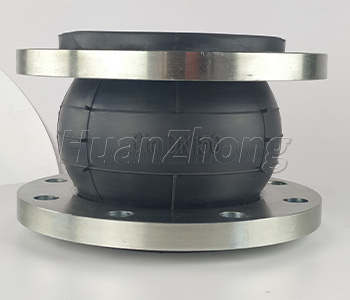Single ball bendable rubber joint maintenance content.
Single ball bendable rubber joint maintenance content. Maintaining a single ball bendable rubber joint is essential to ensure its optimal performance and longevity. Regular maintenance helps to keep the joint in good condition, prevent leaks or failures, and extend its service life. In this article, we will discuss the key maintenance tasks for a single ball bendable rubber joint.
1 . Visual Inspection: Perform regular visual inspections of the rubber joint to check for any visible signs of damage or wear. Look for cracks, tears, or bulges in the rubber body, loose or damaged bolts or flanges, and any signs of leakage around the joint. If any issues are observed, they should be addressed promptly to prevent further deterioration.
2 . Regular Cleaning: Keep the rubber joint clean from dirt, debris, and corrosive substances. Use a mild detergent and water solution to clean the rubber body and the flange connections. Avoid using harsh chemicals or abrasive cleaners, as they may cause damage to the rubber or the metal components.
3 . Check Bolt Tightness: Regularly check the tightness of the bolts or fasteners that connect the rubber joint to the piping system. Over time, the bolts may loosen due to vibration or thermal expansion/contraction. Use a torque wrench to ensure that the bolts are tightened to the manufacturer's recommended torque values. However, be cautious not to overtighten, as this can deform or damage the rubber joint.
4 . Inspect Flange Alignment: Ensure that the flange faces are properly aligned when connecting the rubber joint to the pipes or equipment. Misalignment can cause stress on the rubber joint, leading to premature failure. Use a straight edge or a feeler gauge to check for any gaps or unevenness between the flange faces. If misalignment is detected, adjust and re-align the flanges as necessary.
5 . Monitor Working Conditions: Regularly monitor the working conditions of the rubber joint, such as temperature, pressure, and fluid characteristics. Ensure that the rubber joint is compatible with the specific application requirements. If the operating conditions exceed the recommended limits, it may lead to accelerated wear, decreased performance, or premature failure. Consider upgrading or replacing the rubber joint if necessary.
6 . Replace Worn or Damaged Parts: If any components of the rubber joint, such as the rubber body, flanges, or bolts, are worn-out or damaged, they should be replaced immediately. Operating the joint with worn or damaged parts can compromise its performance and increase the risk of leakage or failure. Always use genuine replacement parts from the original manufacturer to maintain compatibility and quality.
7 . Keep Documentation and Records: Maintain a record of the maintenance activities performed on the rubber joint, including the dates of inspections, repairs, or replacements. Keep any relevant documentation, such as manufacturer's manuals or guidelines, for reference. This information can be useful for future inspections, troubleshooting, or warranty claims.
In conclusion, proper maintenance of a single ball bendable rubber joint is crucial for its optimal performance and longevity. Regular visual inspections, cleaning, checking the bolt tightness and flange alignment, monitoring the working conditions, and replacing worn or damaged parts are key maintenance tasks. By following these maintenance practices, you can ensure the reliability and effectiveness of the rubber joint in your piping system.
